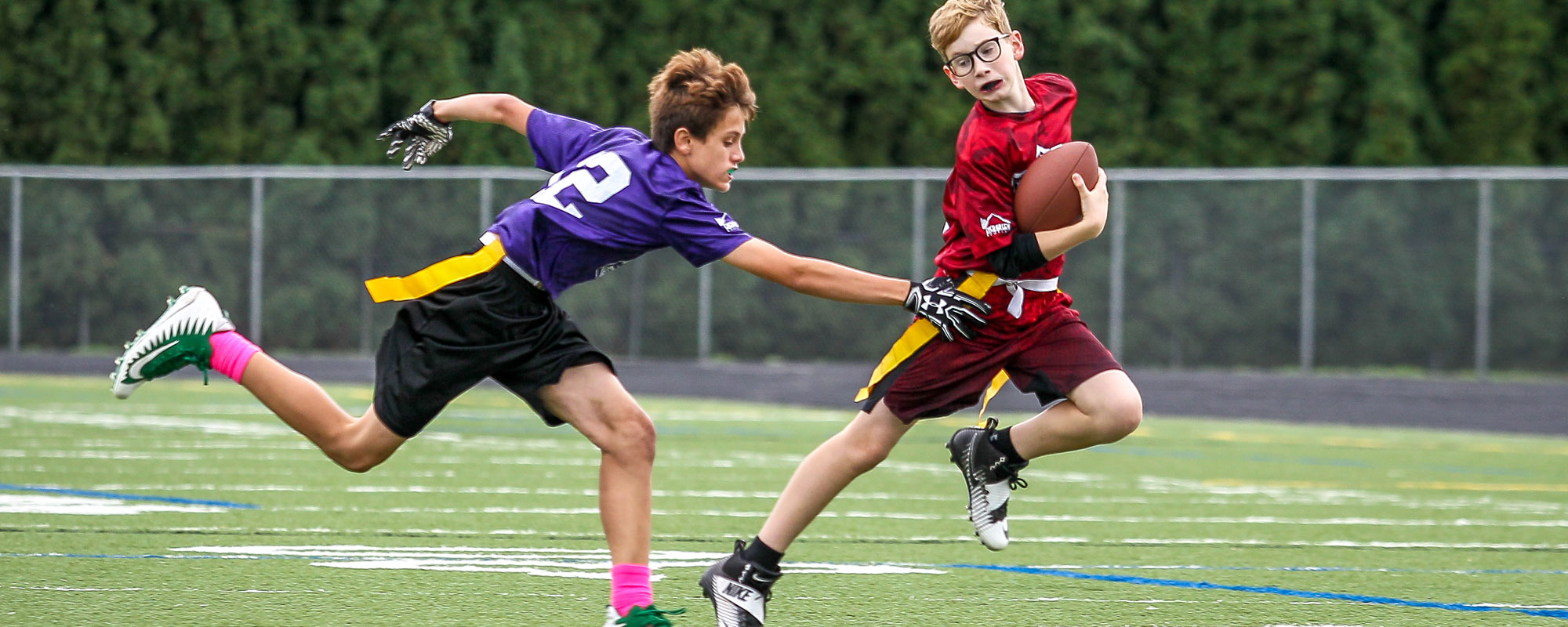
Flag football is a popular variation of the traditional American football game that offers a more accessible and safer experience for players of all ages and skill levels. Instead of tackling, players remove flags attached to their opponents’ hips to signify a “tackle.” This fast-paced and exciting sport has been gaining widespread popularity in recent years, with leagues, tournaments, and even professional competitions dedicated solely to flag football. Whether you’re a seasoned player or new to the game, there are plenty of fascinating facts about flag football that you may not be aware of. In this article, we’ll explore 18 interesting facts about this thrilling sport, from its origins to its unique rules and strategies. So, let’s dive in and discover the exciting world of flag football!
Key Takeaways:
- Flag football is a fun and safe version of American football, where players grab flags instead of tackling. It’s popular for all ages and teaches teamwork and agility.
- With its flexible formats and global presence, flag football offers a great way to stay active, make friends, and learn important life skills. Plus, it’s growing in popularity!
Flag football is a non-contact version of American football.
Flag football is a modified version of traditional American football, where instead of tackling, players remove flags attached to their opponents to end a play.
It is a popular recreational sport for both children and adults.
Flag football is enjoyed by people of all ages and provides a fun and safe way to participate in the sport.
The game was first played in military bases during World War II.
Flag football originated as a recreational activity among soldiers, who played it during their leisure time to stay active and bond with their fellow servicemen.
Flag football can be played on a variety of surfaces, including grass, turf, and even indoors.
This flexible nature makes flag football accessible to players in different environments and climates.
Each team typically consists of 5 to 7 players.
Having smaller teams allows for increased participation and opportunities for everyone to get involved in the game.
The quarterback plays a crucial role in flag football.
The quarterback is responsible for leading the offense, making accurate throws, and making quick decisions on the field.
Flag football emphasizes agility, speed, and strategic thinking.
Players must use their speed and agility to evade defenders and make successful plays, while strategic thinking is essential for both offense and defense.
Flag football encourages teamwork and communication.
Players need to work together, communicate effectively, and coordinate their efforts to achieve success on the field.
There are various formats of flag football, including 5-on-5, 7-on-7, and even 9-on-9.
The number of players on each team can vary, providing flexibility based on the available space and the level of competition.
The game is played in quarters, typically with each quarter lasting 10-15 minutes.
Dividing the game into quarters allows for breaks, strategy adjustments, and enables fair play.
Flag football can be played indoors during the colder months.
Indoor facilities provide an opportunity to continue playing flag football even when the weather doesn’t permit outdoor activities.
The use of flags instead of tackling reduces the risk of injuries.
Flag football offers a safer alternative to traditional football, allowing participants to enjoy the sport without the same level of physical contact.
It is a great way to stay active and improve physical fitness.
Flag football provides an opportunity for cardiovascular exercise, coordination, and overall fitness improvement.
Flag football leagues and tournaments are held worldwide.
This popular sport has a global presence, with numerous leagues and tournaments organized at local, regional, and international levels.
The sport is inclusive and can be adapted for players with disabilities.
Flag football can be modified to accommodate players of different abilities, ensuring inclusivity and equal opportunities for participation.
There are flag football organizations that offer competitive play at different skill levels.
For those looking for a more competitive environment, various flag football organizations host leagues and competitions catering to different skill levels.
Flag football teaches valuable life skills such as sportsmanship and teamwork.
Participating in flag football helps players develop important life skills that can be applied both on and off the field.
The popularity of flag football continues to grow.
With its accessibility, safety, and enjoyable gameplay, flag football is attracting more players and spectators around the world.
Conclusion
Flag football is a beloved sport that offers numerous benefits and enjoyment for both players and spectators. Whether you’re a seasoned player or a curious beginner, flag football provides a unique and exciting twist to the traditional game. From its origin in military training to its now widespread popularity, this non-contact version of football continues to attract individuals of all ages and skill levels.Flag football promotes teamwork, physical fitness, and strategic thinking while eliminating the risk of severe injuries associated with tackle football. It allows players to enhance their football skills, stay active, and foster a sense of camaraderie. Additionally, this sport can be modified to accommodate different age groups, making it accessible for everyone.As you dive into the world of flag football, remember to enjoy the fast-paced action, develop your technique, and embrace the spirit of friendly competition. Whether you’re playing in a local league or engaging in recreational matches with friends, flag football guarantees a thrilling experience.
FAQs
1. What is flag football?
Flag football is a modified version of American football, where players wear flags attached to their hips instead of tackling each other. The objective is to score touchdowns by advancing the ball into the opponent’s end zone.
2. Is flag football suitable for all ages?
Yes, flag football can be enjoyed by people of all ages, from children to adults. Different variations and rules can be implemented to accommodate different age groups and skill levels.
3. How many players are on a flag football team?
A standard flag football team usually consists of 7-10 players, but the number can vary based on league rules and the size of the playing field.
4. Are there any contact or tackling allowed in flag football?
No, flag football is a non-contact sport, and tackling is not allowed. Players must remove the flag from the ball carrier’s waist to stop the play.
5. Can women play flag football?
Absolutely! Flag football is inclusive to both male and female players. Many leagues offer co-ed divisions and women’s-only leagues to ensure equal participation and competition.
6. Do I need any special equipment for flag football?
The main equipment needed for flag football includes a football, flag belts, and appropriate athletic gear, such as cleats and comfortable clothing. Protective gear like helmets and shoulder pads are not necessary.
7. How long does a flag football game typically last?
The duration of a flag football game can vary depending on the league and level of play. Generally, games last between 40 minutes to an hour, divided into two halves.
8. Can I join a flag football league if I have no prior playing experience?
Absolutely! Flag football welcomes players of all skill levels, including beginners. Many leagues and organizations offer introductory programs that cater to those who want to learn and enjoy the sport.
Flag football's a fantastic way to enjoy the thrill of the game without the risk of injury. If you're curious about other fascinating sports facts, why not explore the world of sports trivia? Team sports enthusiasts will love learning about the history and evolution of volleyball. For those seeking a unique recreational sports experience, check out our review of the best Spikeball sets on the market.
Was this page helpful?
Our commitment to delivering trustworthy and engaging content is at the heart of what we do. Each fact on our site is contributed by real users like you, bringing a wealth of diverse insights and information. To ensure the highest standards of accuracy and reliability, our dedicated editors meticulously review each submission. This process guarantees that the facts we share are not only fascinating but also credible. Trust in our commitment to quality and authenticity as you explore and learn with us.


